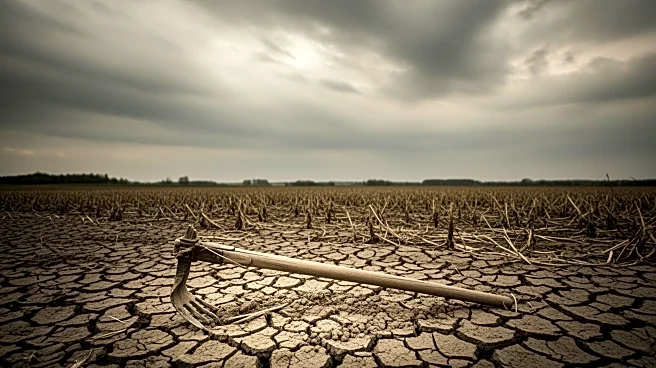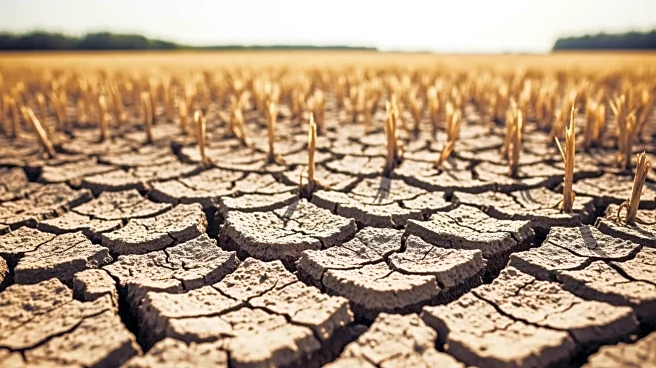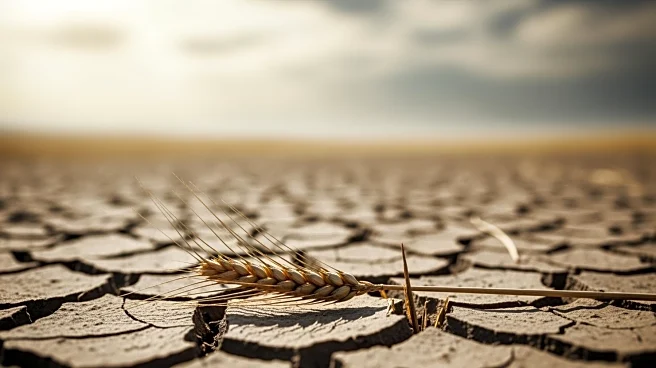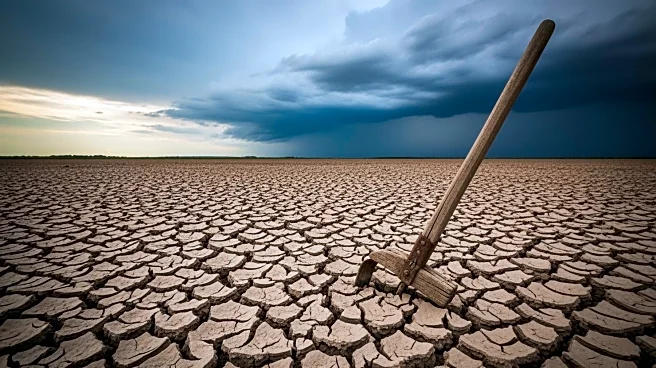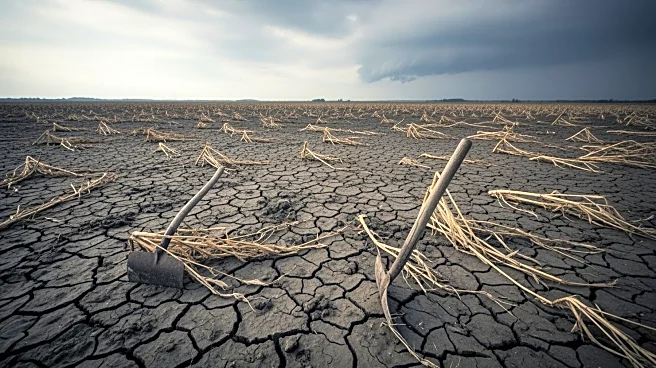What's Happening?
The Food and Agriculture Organization (FAO) has released a report detailing the extensive impact of natural disasters on global agriculture over the past 33 years. The report estimates that these disasters have
caused $3.26 trillion in agricultural losses, averaging $99 billion annually. The losses include 4.6 billion tonnes of cereals, 2.8 billion tonnes of fruits and vegetables, and 900 million tonnes of meat and dairy. Asia has been the most affected region, accounting for 47% of the global losses due to its large agricultural output and vulnerability to floods, droughts, and storms. Pakistan is highlighted as one of the hardest-hit countries, with recent monsoon floods affecting over 9 million people and destroying 849,000 hectares of crops.
Why It's Important?
The report underscores the threat to global food security posed by recurrent climate-driven disasters. It highlights the need for digital transformation in agriculture to mitigate these impacts. Technologies such as AI, drones, and remote sensing are identified as crucial tools for providing real-time risk assessments and early warnings. The FAO emphasizes the importance of investing in digital infrastructure and policy frameworks to support vulnerable groups, including smallholders, women, youth, and indigenous communities. The findings call for stronger global monitoring systems to measure both immediate crop losses and long-term ecological and economic impacts.
What's Next?
The FAO advocates for the adoption of digital platforms to enhance agricultural disaster management. It notes that 9.1 million farmers now access parametric insurance digitally, and early warning systems have helped evacuate 90% of at-risk populations before disasters strike. The report calls for proactive strategies integrating technological innovations to reduce further losses and ensure global food security.
Beyond the Headlines
The report also highlights the growing threat to aquatic food systems, with marine heatwaves causing $6.6 billion in fisheries losses from 1985 to 2022. This points to the severe impact of disasters on both terrestrial and aquatic food systems, emphasizing the need for comprehensive disaster risk reduction strategies.



